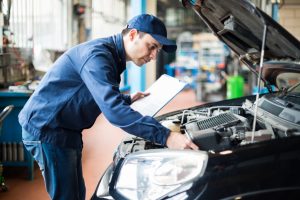The automotive industry has come a long way since its beginnings in the late 19th century. From the first steam-powered cars to today’s electric vehicles, the industry has continuously innovated and changed over the years. Let’s look at how far it has come in such a short period.
The First Automobiles
The invention of the first automobile is credited to Karl Benz and his 1886 Patent Motorwagen. This three-wheeled vehicle was powered by an internal combustion engine and could reach speeds of up to 10 miles per hour. The design of Benz’s the car was revolutionary for its time, and it quickly caught on with other inventors who began experimenting with their designs. Within just a few years, several automakers, including Daimler, Ford, and Renault, had sprung up around the world.
The Rise of Mass Production
By 1910, mass production methods were being used to manufacture cars on a larger scale. Henry Ford’s famous Model T revolutionized the industry by introducing standardized parts and assembly line production techniques that allowed for faster production times and cheaper costs. The use of mass production also allowed automakers to produce larger cars than ever before, making them more affordable for everyday people. In turn, this led to an increase in demand for automobiles all over the world.
Modern Technology and Automobiles
In recent years, technology has had a significant impact on the automotive industry. Cars are now available with features such as self-driving capabilities, lane departure warnings systems, adaptive cruise control systems, GPS navigation systems, automated parking systems, autonomous emergency braking systems, and much more. These features have significantly increased road safety while also providing drivers with added convenience when driving their vehicles. Additionally, electric cars have become increasingly popular in recent years due to their environmental benefits and lower operating costs compared to traditional gasoline-powered vehicles.
The Growing Purpose of Vehicles
Of course, vehicles are no longer just used for transportation. Automotive technology is also used in other industries, such as agriculture, construction, and healthcare. Autonomous vehicles are being developed to carry out tasks more efficiently and safely than ever. In addition, there has been an increasing demand for cars that can be used for ride-sharing services or delivering goods. Let’s look at these purposes and how they are helping people to get around more safely and efficiently.
Moving companies

Moving companies rely heavily on vehicles such as trucks, vans, and trailers to teleport possessions from one location to the next. Vehicles enable advanced moving companies to transport a wide range of bulky possessions quickly and efficiently over long distances. They also provide secure cargo spaces with large loading areas that can be sealed off and monitored during transport. Vehicles have become increasingly sophisticated in recent years with tracking systems, offering customers added peace of mind regarding their possessions being delivered safely and securely.
Ride-sharing services
Using personal vehicles in ride-sharing services has become increasingly popular, offering customers convenience and competitive prices. While this type of service can be beneficial to consumers, there are also challenges associated with personal vehicle use. These include factors such as road safety, maintenance, and insurance coverage. Additionally, careful consideration needs to be taken into account when determining if a driver is fit for the role—drivers must possess an up-to-date license, have a clean driving record free of significant convictions, and complete certain safety screenings.
Delivery services
Delivery services have revolutionized the way we shop and receive goods. Nowadays, customers can easily order something online and deliver it at their doorstep with just a few clicks – all without ever having to leave their homes! This is made possible through the use of modern vehicle technology for shipping. Cars, vans, and even drones are used for the efficient delivery of packages in a fast and secure manner. Not only does this make shopping more convenient for customers, but it also provides an opportunity for businesses to extend their reach into new markets.
Healthcare
As the healthcare industry continues to grow, so does its reliance on vehicles to improve the delivery of essential services. Modern cars offer increased safety, providing adequate access to those in need while minimizing risks associated with exposure to hazardous elements. Furthermore, they offer cost savings through improved fuel efficiency and are ergonomically designed for optimal passenger comfort. In addition to ground transportation, medical personnel can now transport patients swiftly and safely via air ambulance or military aircraft if urgent medical attention is needed.
The Bottom Line
The automotive industry constantly evolves as new technologies are developed and implemented into modern vehicles each year. From its humble beginnings in 1886 with Karl Benz’s Patent Motorwagen to today’s electric vehicles powered by advanced computer algorithms and sensors—it’s clear that we are living in an era where innovation is happening at lightning speed! It will be exciting to see what further advancements are made in the coming years as we continue our journey towards greener alternatives for transportation worldwide!











